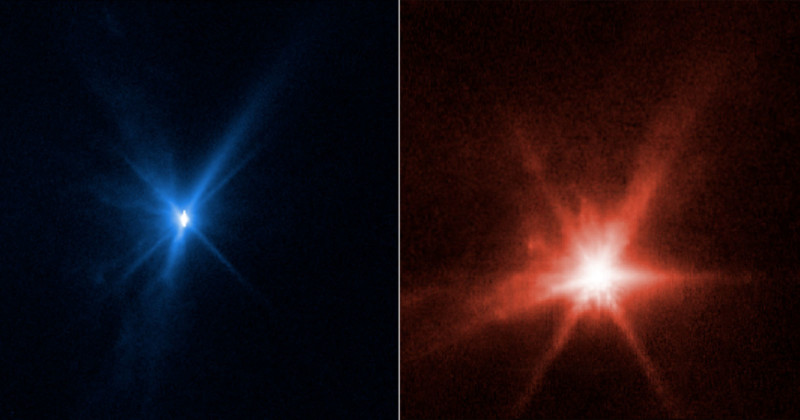We Could Get the World’s First Human-Made Meteor Shower

Meteor showers are opportunities to admire the Universe above while offering photographers the chance to capture stunning images such as the recent Perseids.
These celestial events are natural occurrences but Earth and Mars could be set for the first-ever human-made meteor showers thanks to NASA crashing into an asteroid a couple of years ago.
In 2022, the DART spacecraft purposely collided into an asteroid called Dimorphos (footage below) at roughly 15,000 miles per hour to prove humanity’s planetary defense capabilities. The strike successfully altered Dimorphos’ course demonstrating humans could take out dangerous asteroids that are on a collision course with Earth.
![]()
The crash not only altered Dimorphos’ trajectory but also the asteroid itself: The impact left it severely disfigured and also caused a 6,000-mile-long tail of debris trailing behind it which was captured by telescopes on Earth.
That huge tail contains boulders, rocks, and fragments which researchers think could end up hitting Earth and Mars. A paper published to arXiv and accepted for publication in The Planetary Science Journal predicts that the space rocks could start appearing within seven years.
According to Live Science, the researchers used a NASA supercomputer to simulate the trajectory and velocities of three million fragments and the results suggest that many of them will eventually reach Mars or Earth.
No Need to Worry
The space rocks hurtling toward Earth may sound alarming but there is no need to panic as the fragments will be diminutive — between 0.001 inches (30 micrometers) and four inches (10 centimeters) across. However, their arrival into the Earth-Moon system could trigger a dazzling display of lights in the night sky.
“If these ejected Dimorphos fragments reach Earth, they will not pose any risk,” study lead author Eloy Peña-Asensio, an aerospace engineer and astrophysicist at the Polytechnic Institute of Milan in Italy, tells Universe Today.
“Their small size and high speed will cause them to disintegrate in the atmosphere, creating a beautiful luminous streak in the sky.”
Precisely when this human-made meteor shower will appear is difficult to estimate. Live Science notes that the tiny fragments traveling at 3,350 miles per hour could arrive within seven years but they will probably be too small to make shooting stars.
The larger fragments, which will likely burn up in the sky, are traveling four times slower than the smaller fragments and might not arrive for 30 years.
If and when they do arrive, the researchers have already proposed a name for the meteors: “Dimorphids.”